Oct 7, 2025
Sim4Life.web V9.2: The Beginning of Modeling Intelligence
Sim4Life.web V9.2: The Beginning of Modeling Intelligence
Sim4Life.web V9.2 debuts Modeling Intelligence, marking the start of a powerful toolset that turns simulation data into actionable insights.
Its upgraded multi-objective optimizer enables engineers and scientists to visualize competing goals—for example, safety limits, therapeutic efficacy, and power efficiency—through interactive Pareto plots for a wide range of applications, including deep brain and cardiac stimulation, magnetic resonance imaging (MRI) coil design, and implant antennas.
This is demonstrated in a recent spinal cord stimulation study resulting in an optimized pulse shape that achieved the same recruitment using 5× less energy—boosting implant longevity and safety. Take a deep dive and read more here.
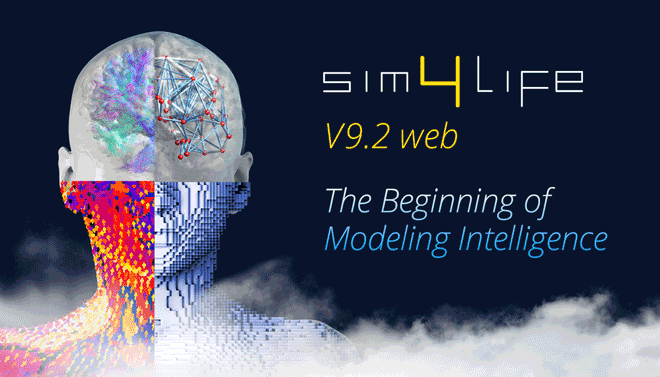
Beyond optimization, V9.2 accelerates your daily work with:
- Artificial intelligence (AI)-driven segmentation and meshing for trunk (new) and head regions, with a 2× speedup,
- a new OpenFOAM plugin for one-click fluid flow and structural mechanics simulations in Sim4Life,
- numerous refinements across solvers, developer tools, and usability.
What’s New & Why It Matters
Modeling Intelligence — Turning Trade-Offs into Design Insights
The upgraded optimizer in Modeling Intelligence combines advanced surrogate modeling with a multi-objective genetic algorithm (MOGA) to turn demanding parameter sweeps into interactive, data-driven explorations.
It visualizes Pareto fronts that illustrate how, e.g., safety, efficacy, and energy efficiency interact, helping users identify the right design solution for their application.
In a recent spinal cord stimulation study, this workflow uncovered pulse shapes that achieve equal recruitment with up to 5× lower energy use, demonstrating how Modeling Intelligence can directly improve device longevity and safety margins.
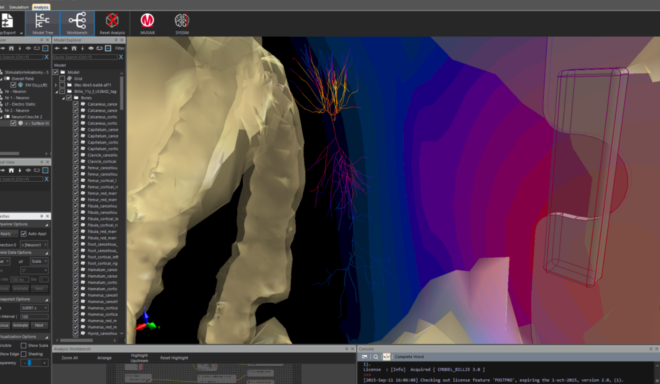
In Sim4Life.web V9.2, users can take Sim4Life’s advanced modeling and simulation setups to the next stage – exploring large parameter spaces and leveraging advanced surrogate modeling techniques for interactive, informed design decision-making. Learn in this Deep Dive how the Multi-Objective Genetic Algorithm (MOGA) Optimizer was utilized to optimize stimulation pulses for spinal cord injury neurorehabilitation, maximizing efficacy while minimizing energy consumption - thereby advancing patient safety and implant longevity.
Quicker Setup of Personalized Models
Our third-generation deep learning model labels head, neck or torso tissues directly from magnetic resonance imaging (MRI)/computed tomography (CT) scans and automatically pre-meshes them, reducing most neuro-stimulation projects from raw images to a “solver-ready” state in about half the clicks and minutes** compared to earlier versions.
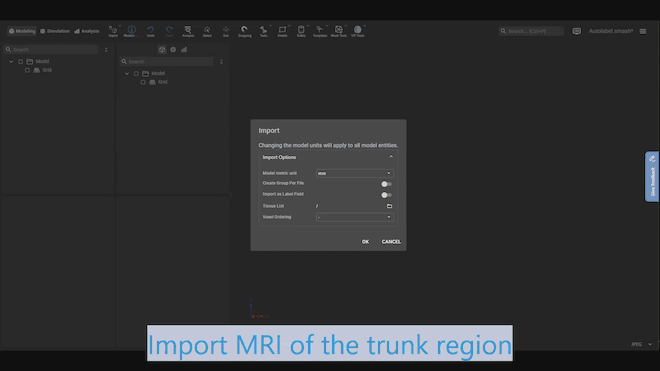
In Sim4Life.web V9.2, users can apply AI-powered segmentation to medical images (either MRI or CT) of the entire trunk region and quickly generate corresponding 3D models without the need for manual segmentation. The tool can segment all major internal organs, vertebrae, and other bones, as well as several individual arteries, veins, and muscles. Upon assigning tissue properties, the models are ready for simulations.
Click‑to‑Install OpenFOAM Plugin
OpenFOAM’s industry-standard solvers now launch straight from Sim4Life’s Plugin Manager: import your meshed anatomy, choose a fluid- or small-strain-mechanics solver, set boundary conditions, and press “Run”. All dictionaries, solver logs, and post-processing views are stored within the Sim4Life project, ensuring that studies are fully reproducible and shareable—requiring no command-line tools, no external dependencies, and preventing broken links.
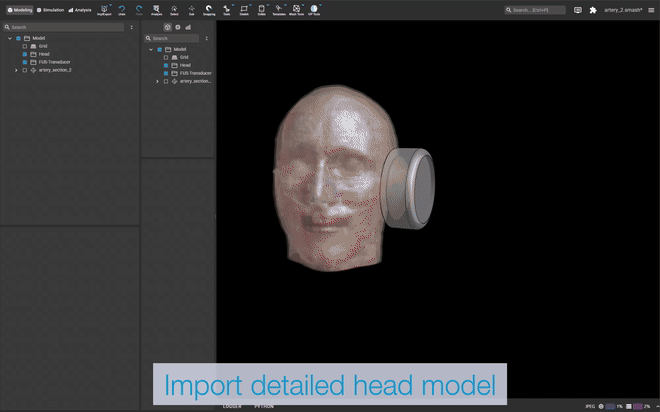
Using Sim4Life.web V9.2, a 500 kHz transcranial focused ultrasound device is modeled to target the left hippocampus of Duke’s (Virtual Population) head, with CT-based maps capturing skull heterogeneity. PEGylated thermosensitive liposomes (100 nm) loaded with doxorubicin circulate in the vasculature. Focused ultrasound induces pressure-dependent release, described in OpenFOAM as a convection–reaction–diffusion process with subsequent drug diffusion into brain tissue. The coupled workflow in Sim4Life integrates acoustic propagation, vascular transport, and drug kinetics, enabling the joint simulation of liposome and drug concentration dynamics.
Broadband Skin Power Absorption Model – mmWave Compliance
Sim4Life.web V9.2 offers a highly efficient implementation of the latest broadband skin model, recently published [Christ et al. (2025)] and adopted in the latest draft of the IEC/IEEE TR APD and other upcoming national regulations. It enables determination of absorbed power density for any device operating at frequencies between 10 and 110 GHz, across all use cases and human models.
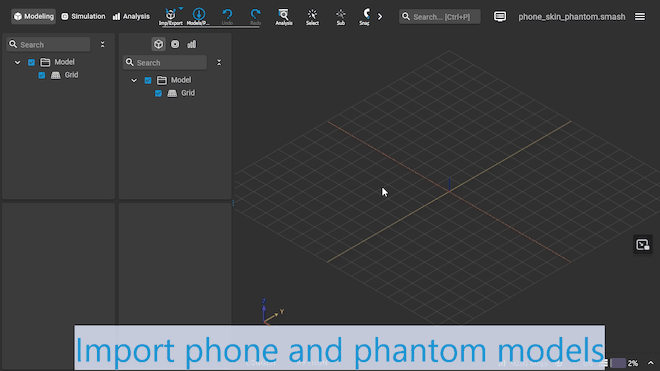
Sim4Life.web V9.2 was used to simulate a 28 GHz smartphone antenna in close proximity to a SPEAG Absorbed Power Density (APD) phantom, using the new Human Skin (Coated, mmWave) model. The visualization highlights the realistic interaction of the antenna’s near-field with the coated-skin formulation, showing the spatial distribution of absorbed power density across the phantom surface. The example illustrates how the model captures reflection and absorption at the air/skin interface, enabling accurate and efficient compliance and performance assessments without explicit meshing of the thin-film coating.
Expanded Libraries & Templates
Sim4Life.web V9.2 introduces a deep brain stimulation (DBS)/stereoelectroencephalography (sEEG) electrode generator, a wizard for the rapid creation of parameterized implants used in these technologies. Electrode geometry—including diameter, contact length, spacing, arc angle, segmentation, and tip offset—can be customized interactively or scripted via the Python-based application programming interface. This streamlines the setup of stimulation and recording electrodes, supporting applications from DBS therapy planning to implant safety assessments. By reducing manual modeling effort, the new tool shortens setup time and enhances reproducibility across neurostimulation and implant safety studies.
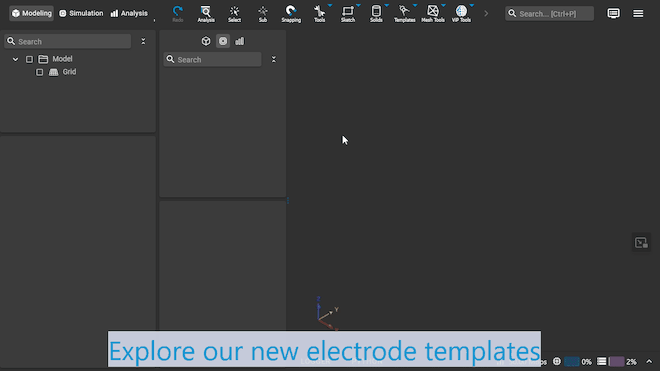
In Sim4Life.web V9.2, our library of templates now includes two new tools for accelerating electrode development, DBS/sEEG and paddle electrode generators—which allow users to generate designs in just a few clicks, with all aspects of the geometry fully parametrized.
Hands-On Help, When You Need It
In Sim4Life.web V9.2, the integrated Help Center allows users to easily connect with Application Support and share logs and screenshots (opt-in) to accelerate troubleshooting. This streamlined communication makes it easier to get support when needed and helps new users get onboarded more quickly and confidently.
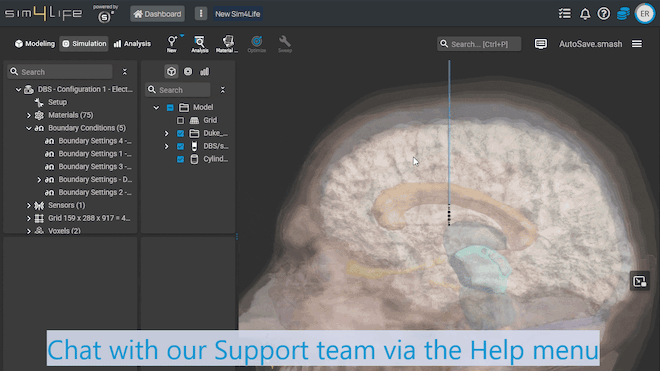
Now accessible via our Help Center in Sim4Life.web V9.2, users can start a chat with our Support Team for live assistance with simulations. During the chat, directly share projects with a single click or book a call for more tailored assistance or general training sessions.
**Benchmark figures reflect typical in-house test cases; actual gains depend on model size and solver settings.
Choose Your Path
| You are... | Next Step |
| Medical Device R&D | Book a private Onboarding session |
| Academic / Student | Activate Sim4Life.science free cloud credit |
| Plugin Developer | Get the SDK & join the community |
Sim4Life.web V9.2 is now available and has been rolled out on all our cloud platforms for commercial users, academics, and students.
For further information, please email us at s4l-sales@zmt.swiss or call +41 44 245 9765.
Kind regards,
The Sim4Life Team



